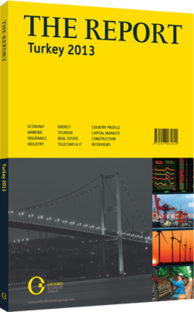On the silver screen: Domestic cinema is coming into its own
While Turkish cinema has been winning awards at international festivals for some years now, its mass media appeal has only recently begun to entice investors. Turkish TV, in particular, has become a major export industry for the country, projecting “soft power” throughout the region while also bringing substantial investment into domestic studios.
A virtuous circle is in progress; as the quality and quantity of domestically produced content grows, it wins more TV viewers – and ad spend – for content producers that invest in the movie and TV industry. At the same time, domestic cinema audiences have remained strong, with substantial rewards for successful hits and a modest, but sustained, ad spend for the country’s cinemas.
Hitting The Big Time
Turkish cinema has been known on the international film festival and art house circuit for some time, with recent, critically acclaimed features including Nuri Bilge Ceylan’s “Distant”, Fatih Ak›n’s “Head On” and Semih Kaplanoğlu’s “Honey”. While these movies have also been popular at home, it has not been until recent times that Turkish-made blockbusters have begun to dominate local screens.
Box office figures manifest such a transformation. March 2013 reports record that seven out of the top 10 grossing movies in Turkish cinemas were Turkish films, according to boxofficeturkiye.com. Number one was a comedy, “CM101MMXI Fundamentals”, which brought 3.71m people to cinemas, and had taken TL36.36m (€15.7m) since its release on January 3, 2013. The highest-rated foreign movie, the Hollywood cartoon “Rise of the Guardians”, was ranked 6th with ticket sales of just 424,479 and takings of TL4.8m (€2.07m) “The local industry has become very strong,” Mehmet Altıoklar, vice-president of the Turkish Film Producers’ Professional Association (FIYAB), told OBG. “Turkish films regularly account for around 50% of all cinema admissions in Turkey. With total admissions averaging 41m-42m a year, that means 21m people go to see Turkish films. I think that’s about the third-biggest local audience in the world, in terms of market share, after the US and India.” The average admission price is around TL10 (€4.32), according to FIYAB, although this is higher in Istanbul at TL13-14 (€5.71-6.05). The budget of a successful blockbuster is typically TL3m-6m (€1. 29m-2.6m), although “Fatih 1453”, 2012’s top film in terms of admissions (6.56m) and revenue (TL55.7m [€24m]), reportedly cost $10m. In any case, the break-even point for a TL3m (€1.29m) budget film is usually around 1m admissions, according to FIYAB. The films that generate the highest TV and cinema audiences tend to be those with well-known Turkish stars, particularly comics.
Coming Attractions
Sector insiders also stress that the best may be yet to come. The frequency with which Turks go to the cinema is still substantially less than in Europe or the US. FIYAB figures show that people visit the cinema around 0.6 times per year in Turkey; in the UK the total averages around 3 and in most eastern European countries, 1-2. If Turkey follows the Eastern European pattern, audiences may double or treble in the years ahead. The profile of cinemagoers has also changed. FIYAB reports that conservative Islamic audiences are growing, creating a demand for more religiously observant films. This audience’s influence can be seen in the prevalence of celebratory accounts of the Ottoman past, such as “Fatih 1453”.
This success is also feeding into TV, with channels now more frequently involved from the beginning as co-producers. This also eases funding for blockbusters, if TV channels predict they will win them higher audiences. In addition, the success of Turkish TV programmes in the Middle East has created greater demand for Turkish studios to produce solely for TV.
The country also now has a competitive advantage in that it has the expertise, market and facilities to make top quality content, while still being substantially cheaper than European or North American competitors. A range of small studios and subcontractors operates in the Turkish production market, reducing overhead and increasing efficiency in comparison to the large studio-based establishments of Europe and America.
You have reached the limit of premium articles you can view for free.
Choose from the options below to purchase print or digital editions of our Reports. You can also purchase a website subscription giving you unlimited access to all of our Reports online for 12 months.
If you have already purchased this Report or have a website subscription, please login to continue.

